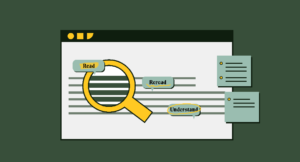At the outset, there is a reason why there is no one prescribed recipe for a successful SEO audit. This might also be the reason why SEO best practices are often inconsistent and contradictory. With Google changing its algorithms frequently, there may not be a one-size-fits-all SEO audit at all.
Brisbane SEO audit follows the same tested principle of a site audit. This is a complete analysis of every single factor that determines a website’s visibility in search engines. It is also when you engage some professional service to examine your website with tools to give you a better idea of problems that need fixing.
The website audit can provide a better understanding as to why your website is not performing the way it should be. Mostly, a normal website should serve its purpose of attracting visitors, keeping them locked and hopefully convert them into paying customers.
Random notes
An SEO audit from your provider takes an in-depth look at the status of your current strategy. If you don’t have an SEO strategy, the agency can still evaluate your website from an SEO perspective.
The work is looking at where your site excels and where it can use improvements. The best strategies should be tailored to your business, your brand, and your audiences.
Software
There are now several SEO software in the market (Ahrefs, Moz Pro, SEMrush) that can do audit or site crawl on your website to determine not just the general search health of the site, but some common inefficiencies that may be dragging your site’s organic performance.
They also possess some other tools to do keyword research, tool on backlink profiling and others that can work with Google Search Console (Webmaster Tools) and are integral to performing some audit tasks.
The following are some important SEO auditing strategies with brief descriptions on how they can be done by your SEO audit team.
Link building opportunities
Links are vital in earning authority to your website. Your site needs recommendations for building site-specific internal and external links.
Internal links in your own pages are vital to forming authoritative hierarchies within your site. Linking from credible pages isn’t everything. Your visitors should be closer to purchasing your product by bringing them to these links.
An easy way to build external links is to search for unlinked mentions (your brand is mentioned in these sites).
Architecture improvements
Sometimes termed as IA, information architecture is the way information is ordered or structured.
The strategy is to redistribute your site’s internal linking structures to pass equity. It also means working with developers and designers to develop user-friendly solutions to improve page authority without compromising UX (user experience).
Identify thin content
Thin content fails meeting user needs. A 300-word blog explaining a complex concept is considered thin. (It is also not realistic to put 1000 to 2000 words on every page of the site.)
Your pages will not be respected by the SERP (search engine results page) if they’re thin.
Export pages with little to no content. You can also offer page-level recommendations on how to fix them.
Updating content is sometimes actually removing content from your site. If there are pages in your site that get little or no organic traffic, they may hurt your overall ranking by lowering the average value of your site. (Look for pages with 0 or 0 organic visits.)
Identify duplicate content
Google knows whether or not you are intentionally duplicating content to clog the SERP.
You may not know it but perhaps your CMS (Content Management System) is dynamically generating new pages that are similar in appearance.
(Some applications do this in archive pages.)
Keyword optimization
There are certain pages of your site where it’s not feasible to fully optimize for target and ancillary keywords.
However, you should make sure all your pages are as optimized as possible for keywords that will help them show in organic search. The first step is conducting keyword research.
Using some SEO products or a free keyword tool, search for keywords related to your topic that have high intent, high volume and low difficulty.
If possible, target keywords should be in the URL, the title, an H1 (headline of the post), an H2 (the subhead) the Meta title, the Meta description, and littered in moderation throughout the body copy.
Optimized Meta tags
Meta tags (Meta title and Meta description) help Google determine the page content it is crawling. They also help users determine the content of your pages, promoting your content.
With Meta tags around, you need to avoid squeezing in keywords for the sake of squeezing them in (keyword stuffing). Write or rewrite Meta tags making sure to optimize them for the keywords to help them show up in the search.
Page update opportunities
The two types of contents that need to be updated regularly are the top page and the “opportunity page”. These are the pages that drive most traffic for your business. Updating them regularly will continue to drive traffic.
An opportunity page is one where if it were to move up slightly in the SERP, would gain a meaningful increase in traffic. Popular SEO products are equipped with rank trackers that allow you to see where pages rank for certain keywords.
Page speed analytics
PageSpeed Insights is your ideal tool here. It can give you basic looks at page speeds and offers suggestions for improvement. You can analyze your page speed at both a site-wide level and at a page level.
Page speed is important because of the increase in mobile searching these days.
Site errors
A 404 is a “page not found” error. It is caused by broken links and images within your site. If a page on your site links to a piece of content that has since been deleted, a 404 error will pop up.
Broken links can fracture your internal linking structure and an irritant to users trying to navigate from one page to another.
Site audit tools can identify all the 404s in your site and fixing them is a matter of determining how important each link is to your structure and user experience.
HTTP to HTTPS switch
Today, HTTPS is faster, more secure and is one of Google’s ranking signals. You need to check your site to make sure it is running on HTTPS.
Also, search your index to scour for places where non-HHTPS appear.




